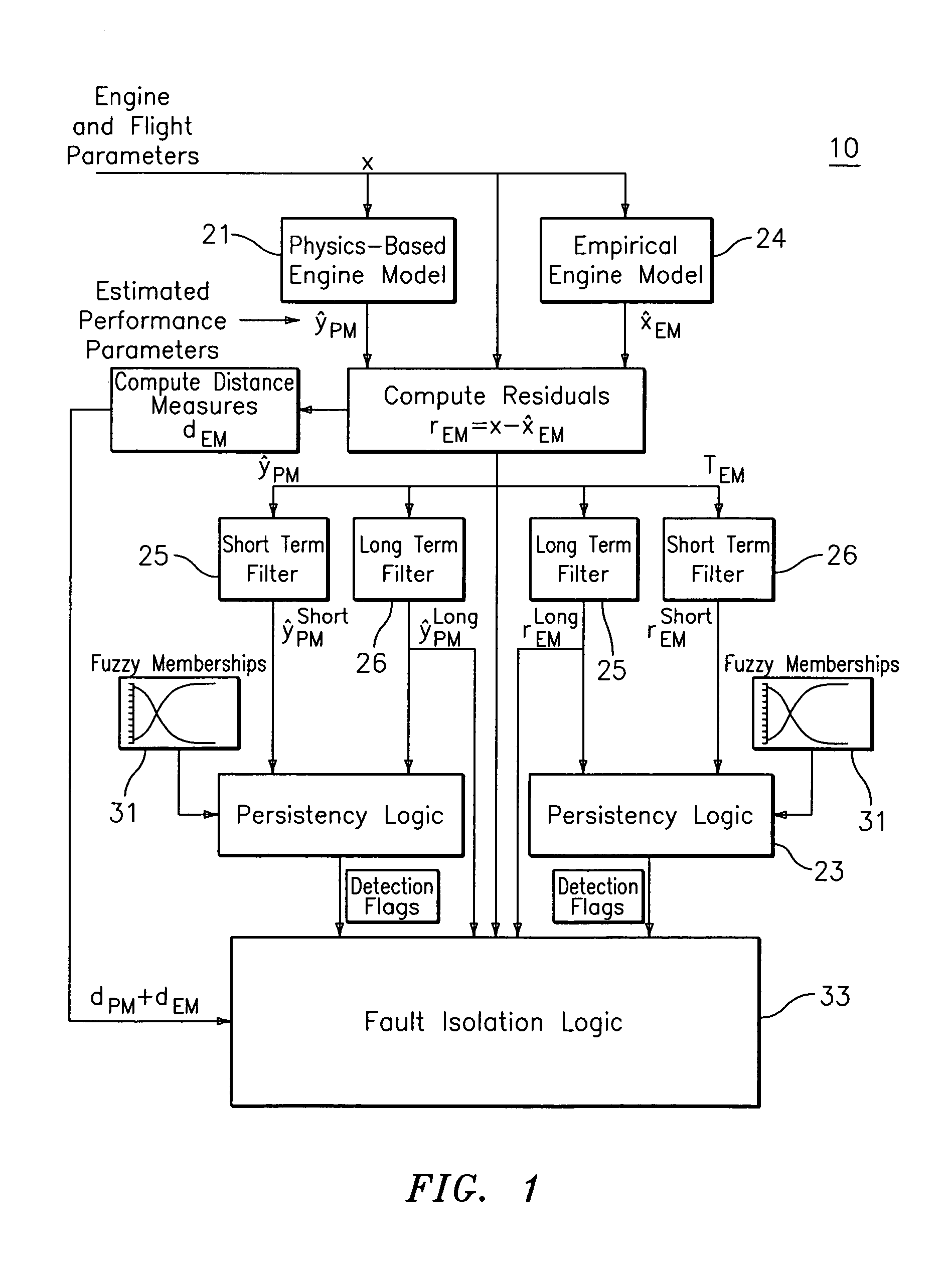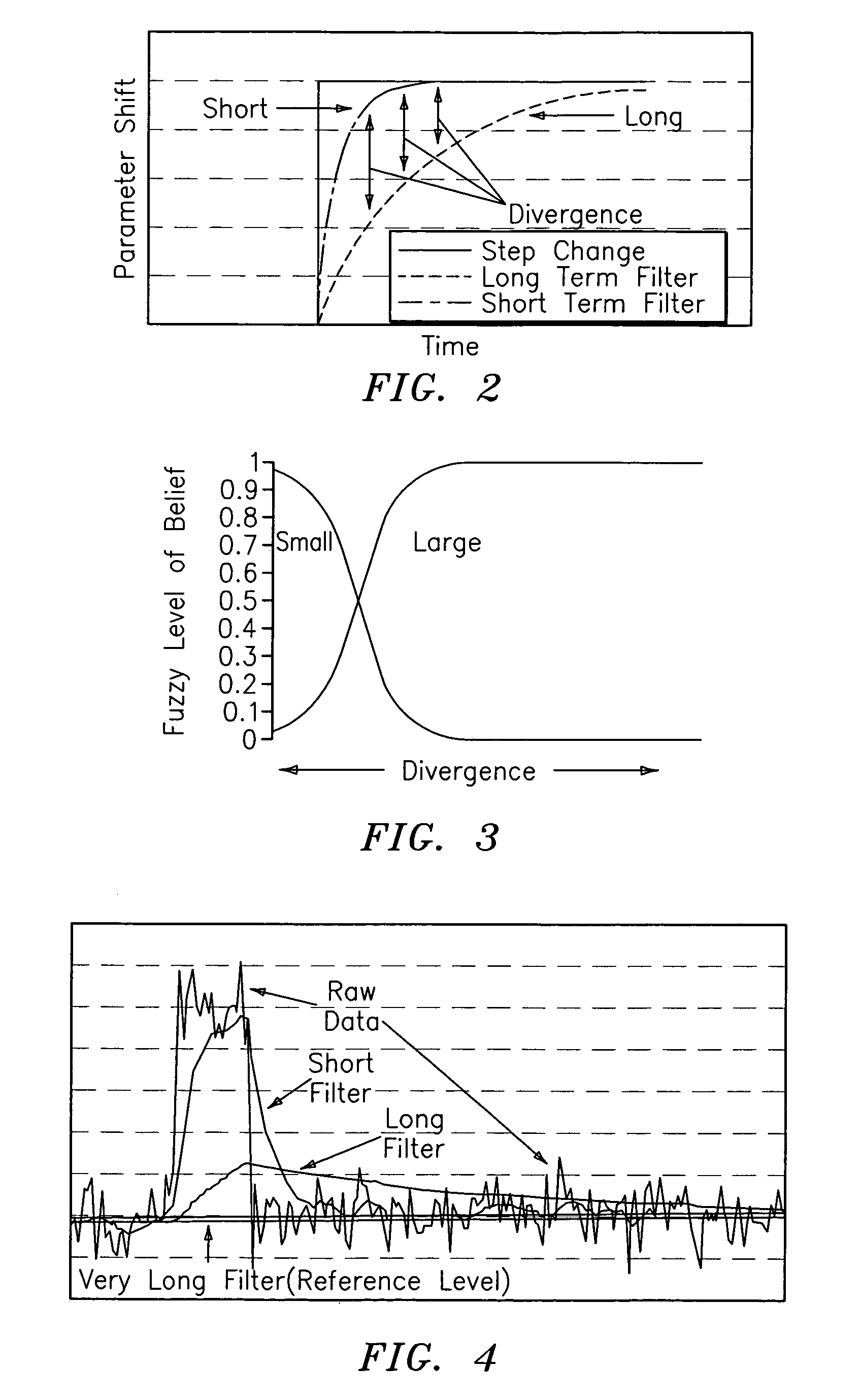Hybrid model based fault detection and isolation system
a fault detection and isolation system technology, applied in the direction of machines/engines, process and machine control, nuclear elements, etc., can solve the problems of measurement error, excessive memory and computational burden, and high computational workload to meet the accuracy requirements of assembling a fault detection and isolation system
- Summary
- Abstract
- Description
- Claims
- Application Information
AI Technical Summary
Benefits of technology
Problems solved by technology
Method used
Image
Examples
Embodiment Construction
)
[0023]It is a teaching of the present invention to provide a system and a method directed to addressing rapid shifts in performance, measurement error, and other faults by detecting their presence through signal-processing elements operating on observed parameter values. The processing is required to mitigate the number of false alarms that might be caused by model and parameter signal uncertainties. The engine parameters that drive this process are assumed to be those that are typically measured and available in a Full Authority Digital Engine Control (FADEC) or in a separate Engine Diagnostic Unit (EDU) performing the engine monitoring function. Typically observed parameters include spool speeds, fuel flow, inter-stage temperatures and pressures, bleed and variable geometry commands (where applicable), as well as engine ambient and aircraft flight condition indicators (altitude, speed, etc). These observed parameters serve as input parameters to a series of engine models that may...
PUM
 Login to View More
Login to View More Abstract
Description
Claims
Application Information
 Login to View More
Login to View More - R&D
- Intellectual Property
- Life Sciences
- Materials
- Tech Scout
- Unparalleled Data Quality
- Higher Quality Content
- 60% Fewer Hallucinations
Browse by: Latest US Patents, China's latest patents, Technical Efficacy Thesaurus, Application Domain, Technology Topic, Popular Technical Reports.
© 2025 PatSnap. All rights reserved.Legal|Privacy policy|Modern Slavery Act Transparency Statement|Sitemap|About US| Contact US: help@patsnap.com



